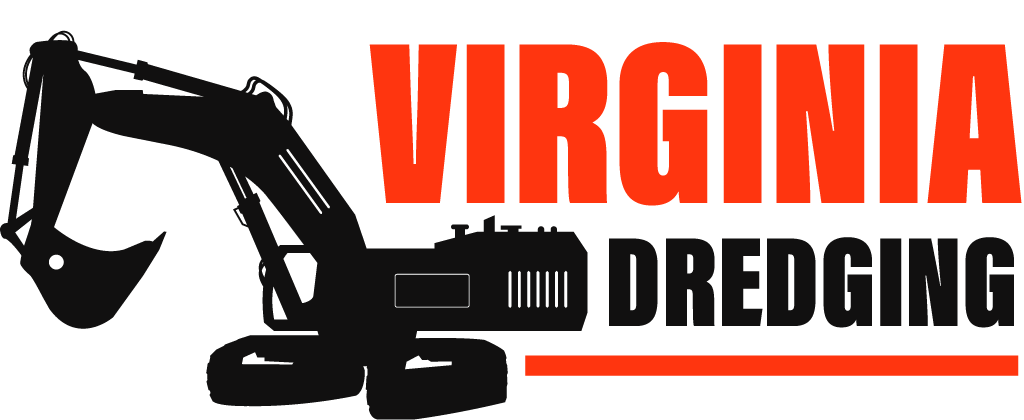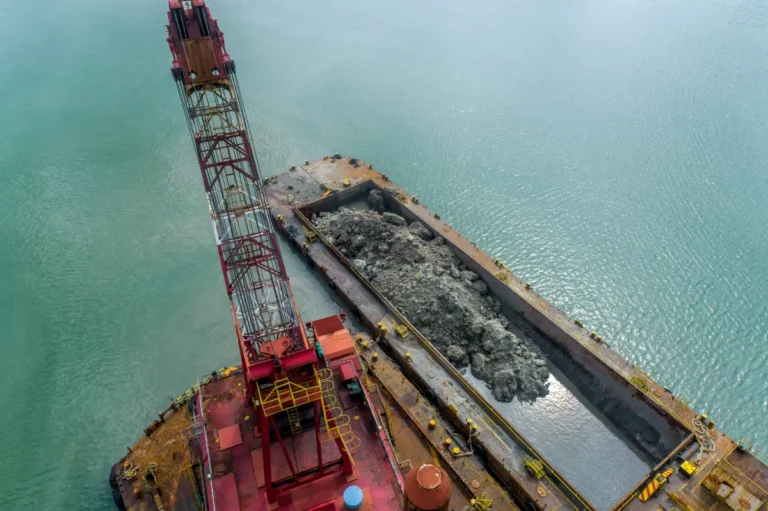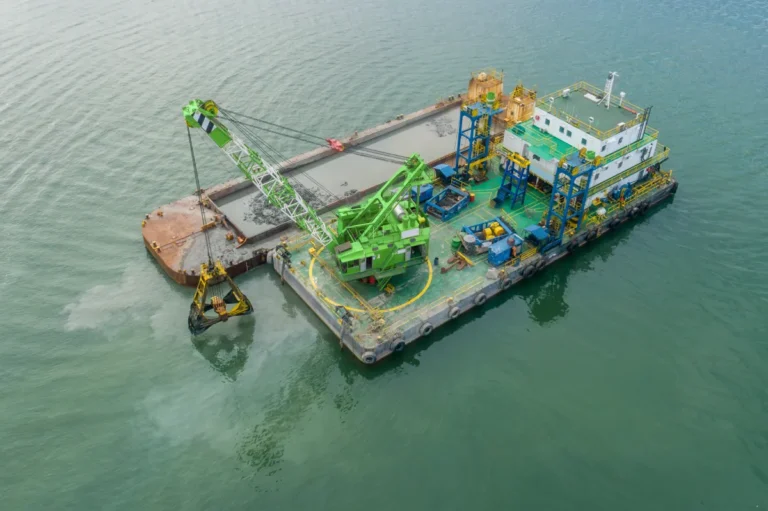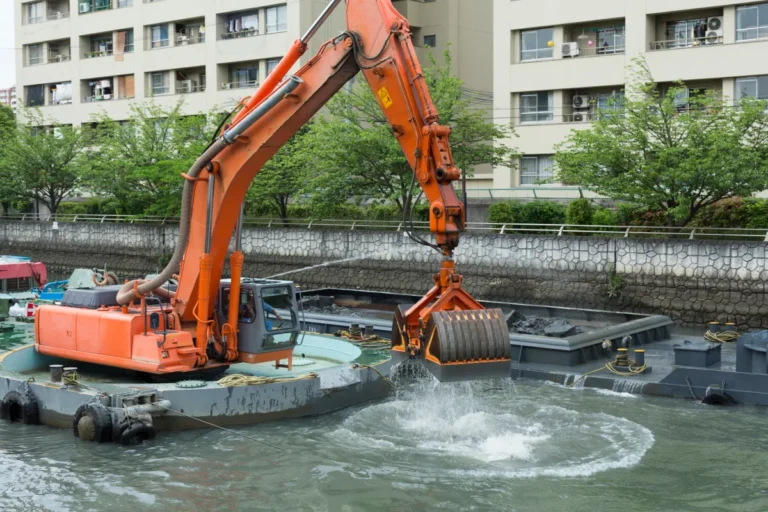Ports and harbors are the beating heart of global trade, handling the majority of cargo that moves between countries and continents. To keep these vital gateways operating efficiently, ongoing maintenance is essential to manage sediment buildup in shipping channels, turning basins, and berthing areas. This is where dredging plays a critical role by removing underwater sediments—such as silt, sand, clay, and gravel—to maintain or deepen navigational routes and port infrastructure. Without regular dredging, many ports would become too shallow for large commercial vessels, leading to delays, increased shipping costs, or even forcing ships to reroute.
Among the various types of dredging equipment used worldwide, the hopper dredger stands out for its efficiency, mobility, and ability to perform maintenance dredging in both open water and confined port environments. A hopper dredger is a self-propelled vessel equipped with large onboard hoppers for collecting and transporting dredged materials, making it an essential tool for continuous and effective sediment management. Two widely used subtypes include the suction hopper dredger, which employs powerful pumps to extract material from the seafloor, and the trailing suction hopper dredger, which features trailing suction pipes that allow the vessel to move while collecting sediment—enabling quicker and more precise operations. In this article, we’ll explore how hopper dredgers function, examine their key components, and highlight why they are indispensable for keeping ports functional, safe, and economically viable.
What Is a Hopper Dredger?
A hopper dredger is a specialized vessel used in the removal, transportation, and disposal of underwater sediments. Unlike stationary dredgers, hopper dredgers are self-propelled, allowing them to navigate between dredging and disposal sites without additional assistance. This mobility makes them highly efficient for maintenance dredging in ports, rivers, and coastal areas where sedimentation can disrupt safe navigation.
At the core of every hopper dredger is its large onboard storage tank known as the hopper. As the vessel collects sediment from the seabed, the material is temporarily stored in this hopper until it can be discharged at a designated disposal site or used for land reclamation or beach nourishment.
Key Structural Components of a Hopper Dredger

To perform its dredging duties, a hopper dredger is equipped with several crucial components:
- Dragheads: These are suction heads positioned on the seabed to collect sediment. They are typically mounted at the end of long suction pipes.
- Suction Pipes: These pipes extend from the vessel down to the seabed, allowing dredged material to be transported from the draghead into the hopper.
- Dredge Pumps: These powerful pumps generate suction, enabling the transport of sediment through the suction pipes.
- Overflow Valves: These help regulate the water-to-sediment ratio in the hopper, optimizing capacity while managing excess water.
- Bottom Doors or Discharge Systems: Located underneath the hopper, these systems allow for controlled dumping of the dredged material.
Suction Hopper Dredger vs. Other Types of Dredgers
A suction hopper dredger operates by lowering its dragheads and using suction to remove sediment from the seabed while the vessel is either stationary or moving slowly. This is different from mechanical dredgers (like bucket or backhoe dredgers) that physically scoop material using mechanical arms or buckets.
A trailing suction hopper dredger (TSHD), on the other hand, is designed to dredge while the vessel is in motion. It uses long trailing suction arms equipped with dragheads that glide along the seabed, enabling continuous sediment collection even while navigating. TSHDs are particularly useful in maintaining deeper channels and coastal areas where constant movement and precision are required.
How a Hopper Dredger Works
The operation of a hopper dredger is a highly coordinated process that combines heavy-duty machinery, precise navigation, and advanced monitoring systems. Designed for efficiency and versatility, these vessels follow a systematic cycle to remove sediment and transport it to designated disposal or reclamation areas. Whether it’s a suction hopper dredger working in a confined harbor or a trailing suction hopper dredger operating along a long channel, the fundamental process remains similar.
Positioning the Vessel
Before dredging begins, the vessel is carefully positioned using GPS navigation systems and onboard sensors. Accurate positioning is critical to ensure the correct areas are dredged according to the project’s depth and alignment requirements. In the case of a trailing suction hopper dredger, positioning continues dynamically as the vessel moves slowly along the dredging route.
Lowering the Dragheads
Once the dredging area is confirmed, dragheads connected to suction pipes are lowered to the seabed. These dragheads are designed to loosen and collect sediment, aided by water jets or mechanical teeth depending on the material type.
Sediment Collection via Suction Pipelines
With the dragheads in place, powerful dredge pumps are activated to create suction. The sediment is drawn up through the suction pipelines into the hopper. In a trailing suction hopper dredger, this process continues while the vessel moves along the planned dredge track, enabling uninterrupted material collection.
Hopper Filling
As sediment and water enter the hopper, the solid material begins to settle, while excess water is released through overflow valves. The dredging team monitors the fill level to prevent spillage and ensure optimal use of the hopper’s capacity. Some vessels are equipped with sensors that measure sediment density in real time for more efficient operation.
Transport to Designated Disposal or Reclamation Site
Once the hopper is filled, the hopper dredger departs the dredging area and navigates to a designated disposal location or reclamation site. Thanks to their self-propelled design, these vessels can cover long distances without the need for towing or external assistance.
Material Discharge Methods
Depending on the project requirements, hopper dredgers use various discharge methods:
- Bottom Dumping: Hopper doors open to release material directly onto the seafloor, commonly used in offshore disposal sites.
- Rainbowing: A high-pressure spray nozzle projects dredged material in an arc onto land or shallow areas, typically used in beach nourishment and reclamation.
- Pumping Ashore: Using onboard booster pumps, the material is pumped through floating or submerged pipelines for precise placement on land or within confined areas.
Onboard Monitoring and Automation Systems
Modern hopper dredgers, especially trailing suction hopper dredgers, are equipped with advanced automation systems that monitor depth, positioning, sediment concentration, and hopper levels in real time. Dredging operations can be optimized using digital dashboards, GPS tracking, sonar imaging, and flow meters. These tools enhance efficiency, reduce fuel consumption, and help maintain compliance with environmental regulations.
Trailing Suction Hopper Dredger (TSHD): A Specialized Subtype
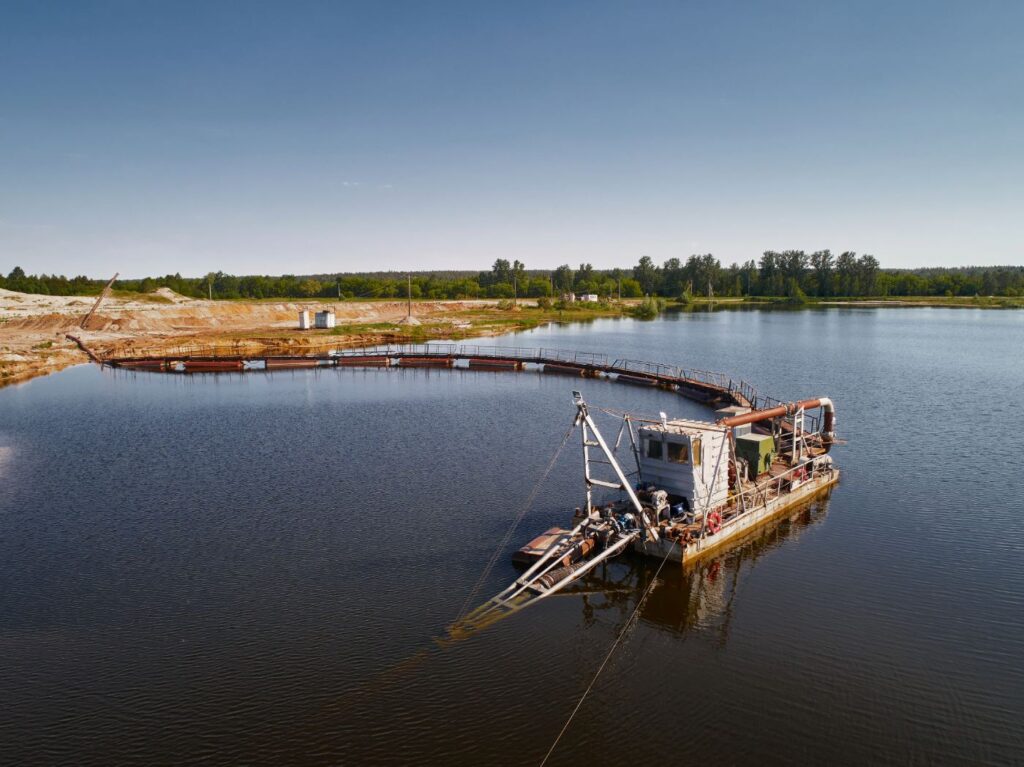
Among the various configurations of hopper dredgers, the trailing suction hopper dredger (TSHD) is one of the most advanced and is widely used for large-scale and continuous dredging operations. While all hopper dredgers share the ability to collect and transport dredged material, TSHDs are uniquely engineered to perform suction dredging while in motion, offering a significant efficiency advantage over stationary alternatives.
What Sets a Trailing Suction Hopper Dredger Apart
A trailing suction hopper dredger differs from a standard suction hopper dredger in how it collects sediment. Instead of remaining stationary during the dredging process, a TSHD moves slowly forward while trailing one or more suction pipes along the seabed. These trailing arms are fitted with dragheads that loosen and collect material, allowing the dredger to intake sediment while navigating the dredging area continuously. This results in faster project completion and minimized disruption to marine traffic in busy ports and coastal zones.
Advantages of TSHDs in Continuous Dredging Operations
The continuous dredging capability of TSHDs offers several key benefits:
- Increased Productivity: TSHDs can cover long stretches of channel or coastline in a single dredging run, improving overall output.
- Time Efficiency: By eliminating the need to reposition frequently, these dredgers significantly reduce downtime.
- Operational Flexibility: Ideal for both deepening and maintenance dredging in ports, rivers, and offshore areas.
- Minimal Obstruction: Self-propelled and maneuverable, TSHDs work efficiently without interfering with other maritime operations.
Specialized Design Features of Trailing Suction Hopper Dredgers
To support their dynamic dredging capabilities, TSHDs incorporate several unique design elements:
- Drag Arms: These extend from the sides of the vessel and rest on the seabed during dredging. Each drag arm includes a draghead, suction inlet, and jetting system to break up compacted material.
- Trailing Speed Control: TSHDs operate at slow, controlled speeds during dredging to ensure thorough material collection and to maintain optimal flow into the hopper.
- Overflow Systems: To maximize the concentration of solids in the hopper, TSHDs use overflow valves that discharge excess water during the filling process. Some vessels also use environmentally friendly overflow technology to reduce turbidity and sediment plumes.
Materials Commonly Dredged by TSHDs
Trailing suction hopper dredgers are well-suited for a wide range of sediments, including:
- Silt – Often found in river mouths and port basins, easily collected and transported.
- Sand – Frequently removed for navigation maintenance or used in beach nourishment and land reclamation.
- Gravel – Requires robust dragheads and pumping systems, often extracted from offshore seabeds.
Advantages of Using Hopper Dredgers in Port Maintenance
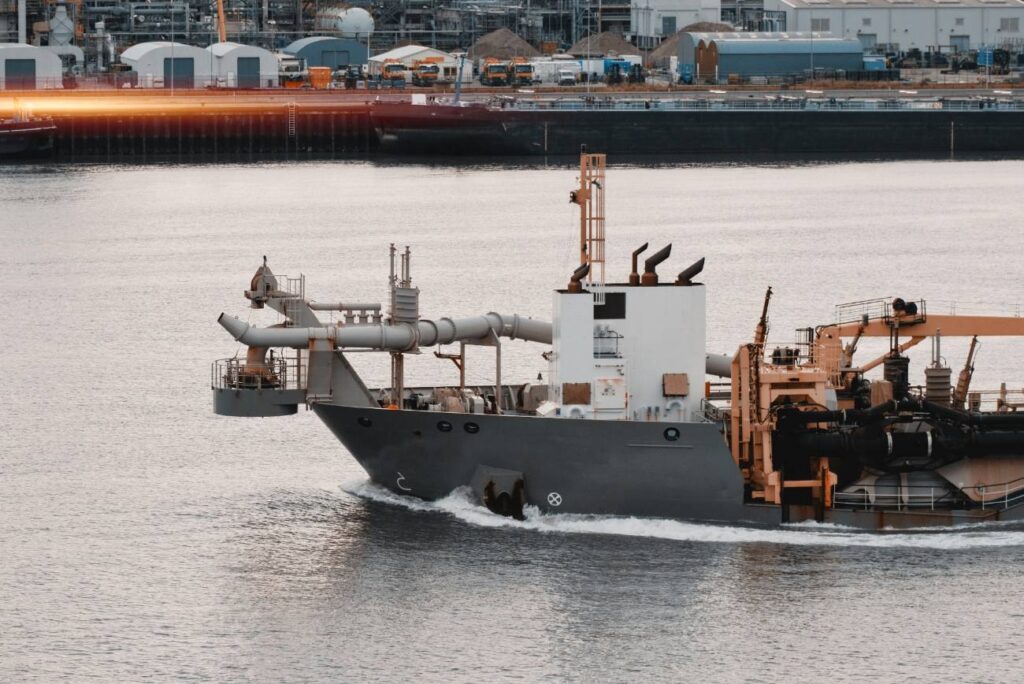
Maintaining safe, navigable waterways is critical for efficient port operations. Among the different types of dredging equipment available, the hopper dredger is often the preferred solution for port maintenance due to its unmatched combination of mobility, efficiency, and environmental performance. Whether deploying a suction hopper dredger in confined harbor areas or a trailing suction hopper dredger for larger maintenance projects, these vessels offer numerous advantages.
High Mobility and Self-Propulsion
One of the most significant benefits of a hopper dredger is its self-propelled design. Unlike stationary dredgers that rely on external support for movement, hopper dredgers can independently navigate to and from dredging zones and disposal sites. This autonomy makes them ideal for busy ports where quick repositioning is essential to avoid disrupting vessel traffic or scheduled operations.
Efficient Sediment Transport and Disposal
Hopper dredgers are designed to handle the complete dredging cycle—from excavation to transportation to disposal—without external assistance. Sediment collected by the suction hopper dredger or trailing suction hopper dredger is stored in an onboard hopper, then transported directly to a designated site for discharge. This all-in-one capability significantly reduces project timelines and logistics costs, especially for maintenance dredging projects that require frequent trips.
Versatility in Various Seabed Conditions
Thanks to advanced draghead and suction system designs, hopper dredgers can operate effectively across a range of seabed types. Whether working in loose silt, compact sand, or coarse gravel, both suction hopper dredgers and trailing suction hopper dredgers can be configured to handle the specific material. This adaptability is essential for ports with variable bottom conditions or seasonal sediment changes.
Minimal Disruption to Port Activities
Because hopper dredgers can move and operate without the need for extensive mooring or anchoring systems, they cause minimal disruption to other vessels in the port. The ability of a trailing suction hopper dredger to work while in motion further reduces its footprint, allowing it to conduct maintenance dredging with little interference to regular shipping traffic, pilot operations, or terminal activities.
Environmental Control and Reduced Turbidity with Modern Suction Systems
Modern suction hopper dredgers are equipped with environmental control systems that help minimize turbidity and sediment dispersion. Features like overflow monitoring, eco-friendly draghead designs, and real-time dredge control systems reduce the ecological impact of dredging. These innovations are particularly important in environmentally sensitive areas where water quality and marine life must be protected during maintenance operations.
Common Applications in Port Maintenance
Ports require constant upkeep to ensure that commercial vessels can navigate safely and efficiently. As sediment builds up over time, it can restrict access to docks, berths, and channels, leading to costly delays and logistical challenges. The hopper dredger plays a central role in resolving these issues, offering flexible solutions for a wide range of maintenance tasks. Both suction hopper dredgers and trailing suction hopper dredgers are frequently deployed to maintain and enhance port infrastructure.
Deepening and Widening Navigation Channels
One of the primary uses of a hopper dredger is deepening and widening navigation channels to accommodate larger vessels. As global shipping trends shift toward bigger container ships and bulk carriers, ports must regularly adapt their channel dimensions. Trailing suction hopper dredgers are particularly effective for this application, as they can cover long stretches of channel while continuously removing sediment and transporting it to offshore disposal sites.
Removing Siltation and Maintaining Draft Levels
Siltation is a common issue in both natural and artificial harbors, where fine sediments accumulate and reduce water depth. Suction hopper dredgers are ideal for removing this material with precision, especially in confined areas like berths and turning circles. Routine maintenance dredging ensures that draft levels remain safe for incoming and outgoing vessels, reducing the risk of grounding and avoiding unnecessary downtime.
Creating Turning Basins and Berth Pockets
Turning basins and berth pockets are critical components of port design, allowing ships to maneuver safely into position. These areas often require specialized dredging to achieve uniform depths and clearances. A hopper dredger, particularly when equipped with advanced dragheads and control systems, can sculpt these underwater zones with accuracy. For larger projects, a trailing suction hopper dredger can execute the work efficiently while minimizing disturbance to ongoing port operations.
Land Reclamation for Port Expansion
Expanding port facilities often involves creating new land by depositing dredged material in designated fill areas. This is another area where hopper dredgers excel. After collecting the sediment, the material can be discharged via bottom doors or pumped ashore for controlled placement. Both suction hopper dredgers and trailing suction hopper dredgers are frequently used in reclamation projects that support port growth and the development of adjacent logistics infrastructure.
Beach Nourishment in Coastal Areas
Coastal erosion can threaten port access channels, shoreline stability, and nearby infrastructure. Hopper dredgers play a dual role by maintaining port depths and supplying material for beach nourishment. Using a technique known as rainbowing or pipeline discharge, trailing suction hopper dredgers can efficiently deposit sand on eroded beaches, helping protect coastlines while utilizing material already removed from dredging operations.
Environmental Considerations
While the primary role of a hopper dredger is to remove sediment and maintain navigable waterways, its environmental impact must also be carefully managed. Port authorities and dredging contractors are increasingly focused on minimizing ecological disruption through responsible sediment handling, adherence to regulations, and the use of advanced dredging technologies. Both suction hopper dredgers and trailing suction hopper dredgers are now equipped with features that support more sustainable dredging operations.
Overview of Sediment Management Practices
Effective sediment management starts with understanding the composition and behavior of the material being dredged. Before a hopper dredger begins operations, surveys and sediment testing are conducted to determine the best methods for excavation, transport, and disposal. These studies help identify contaminants, grain size, and potential reuse applications, guiding decisions on where and how dredged material should be placed—whether at sea, on land, or used in land reclamation or beach nourishment.
Use of Environmental Dredging Techniques
Modern suction hopper dredgers are designed with environmental sensitivity in mind. Techniques such as precise draghead control, slow trailing speeds, and low-turbulence suction help reduce the resuspension of fine sediments into the water column. Trailing suction hopper dredgers, in particular, can be equipped with eco dragheads and anti-turbidity systems that significantly lower the impact on water quality during dredging.
Many operations also incorporate silt screens or sediment curtains around sensitive areas, and some dredgers feature turbidity sensors that provide real-time feedback to adjust dredging activity dynamically. These environmental dredging methods help preserve marine ecosystems and protect nearby habitats from sediment plumes and contamination.
Compliance with Regulatory Standards
Every hopper dredger project must comply with local, national, and international environmental regulations. Permitting agencies require detailed dredging plans that address sediment handling, disposal methods, water quality protection, and habitat preservation. Monitoring and reporting are often mandated throughout the project lifecycle to ensure ongoing compliance.
Technologies onboard modern trailing suction hopper dredgers aid in this compliance by tracking operations via GPS, logging overflow events, and recording sediment flow data. These systems not only ensure adherence to regulations but also support transparency with stakeholders and environmental oversight bodies.
Benefits of Controlled Overflow and Precise Dumping
One of the key environmental challenges in hopper dredging is managing overflow water during hopper filling. Uncontrolled overflow can lead to sediment plumes that impact aquatic life and water clarity. However, many suction hopper dredgers now feature overflow control systems that optimize the sediment-to-water ratio and minimize excess discharge. In some vessels, overflow valves are designed to redirect water in ways that reduce plume formation.
Similarly, precision dumping capabilities in hopper dredgers allow operators to release material exactly where it’s needed. Whether bottom dumping offshore or pumping sediment onto a beach or reclamation site, these systems help ensure that dredged material is placed safely and efficiently without spreading beyond its intended footprint.
Maintenance and Operational Challenges
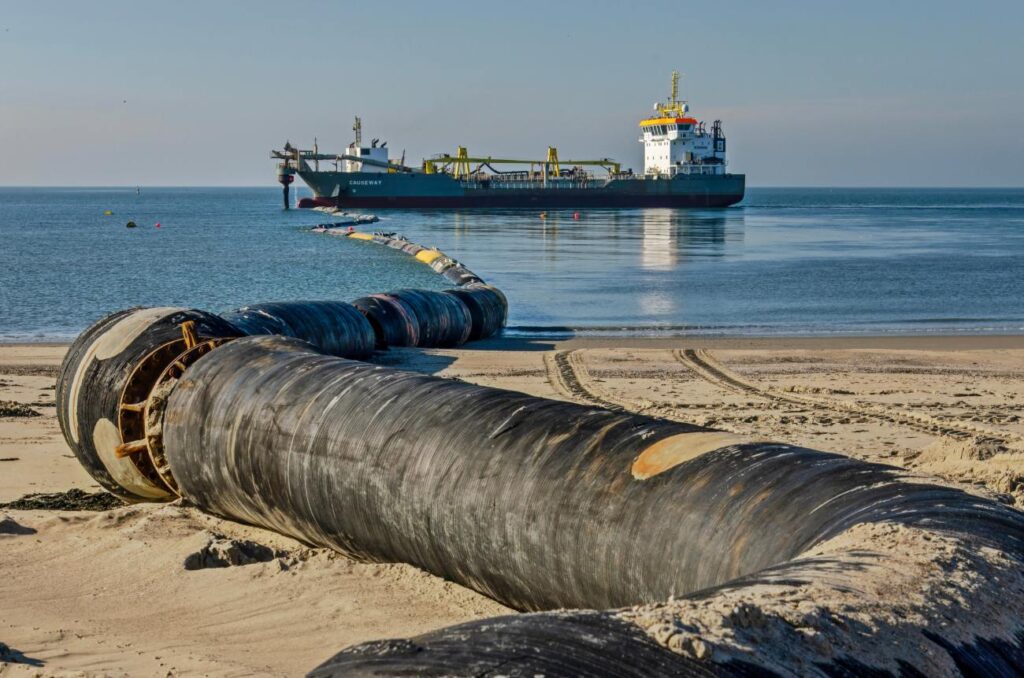
Operating a hopper dredger involves more than just navigating and dredging—it requires ongoing attention to equipment health, environmental conditions, and crew readiness. Despite their efficiency and versatility, both suction hopper dredgers and trailing suction hopper dredgers face unique challenges that can affect performance, safety, and operational timelines. Understanding these challenges is essential for maximizing productivity and extending the lifespan of dredging equipment.
Wear and Tear of Suction Components
One of the most common maintenance issues in any hopper dredger operation is the wear and tear of suction system components. The abrasive nature of dredged materials—such as sand, gravel, and silt—can quickly degrade dragheads, suction pipes, and dredge pumps. In trailing suction hopper dredgers, where suction arms are constantly in motion and exposed to seabed contact, the dragheads are especially vulnerable to damage and erosion.
Routine inspections and timely replacement of liners, nozzles, and pump parts are essential to prevent breakdowns. Many modern suction hopper dredgers use wear-resistant materials and reinforced components to handle high-duty cycles, but regular maintenance remains crucial for uninterrupted operations.
Managing Dredge Cycle Efficiency
Optimizing the dredging cycle—excavation, hopper filling, transit, and disposal—is vital for project success. Inefficient cycles can lead to increased fuel consumption, delayed timelines, and higher operational costs. Variables such as sediment density, pump performance, overflow rates, and travel distances must be continuously monitored and adjusted.
Trailing suction hopper dredgers have an advantage here, as they can maintain continuous dredging while moving, allowing for more efficient cycles in long or deep channels. However, balancing speed, fill efficiency, and environmental limits requires skilled operators and automated monitoring systems.
Weather Limitations and Tidal Conditions
Hopper dredging is highly sensitive to weather and tidal influences. Rough seas, high winds, and heavy currents can delay operations, increase fuel usage, or pose safety risks to equipment and crew. For suction hopper dredgers working near shorelines or in confined harbors, strong tides and limited maneuverability can make precise positioning difficult.
Trailing suction hopper dredgers, while more capable of working in open seas, still need to account for wave action and sediment drift during trailing operations. Project planning must factor in seasonal weather patterns and have contingencies in place for delays caused by adverse conditions.
Crew Training and Safety Protocols
The efficient operation of a hopper dredger depends heavily on the knowledge and coordination of its crew. From operating suction systems to navigating dredge routes and responding to equipment faults, highly trained personnel are essential. Safety protocols must be strictly enforced, especially during maintenance, component replacement, and discharge operations.
Both suction hopper dredgers and trailing suction hopper dredgers are complex vessels that require specific certifications and technical skills. Training programs, emergency response drills, and continuous education are necessary to maintain high safety standards and avoid costly downtime due to human error.
Conclusion
The hopper dredger remains a cornerstone of modern port maintenance, offering unmatched efficiency, versatility, and environmental control in sediment management. Whether utilizing a suction hopper dredger for precision work in confined harbors or deploying a trailing suction hopper dredger for large-scale channel maintenance, these self-propelled vessels are essential to keeping ports navigable, safe, and economically viable. With advancements in automation, eco-friendly systems, and onboard monitoring, hopper dredgers continue to evolve, ensuring sustainable and reliable performance in even the most demanding marine environments.

